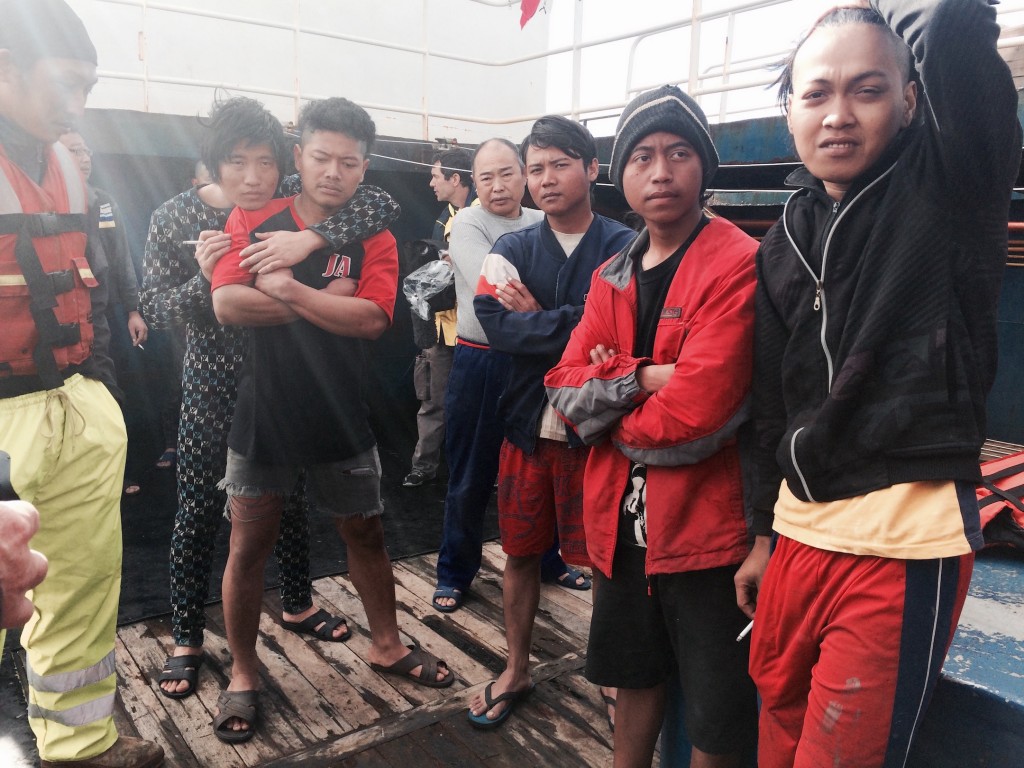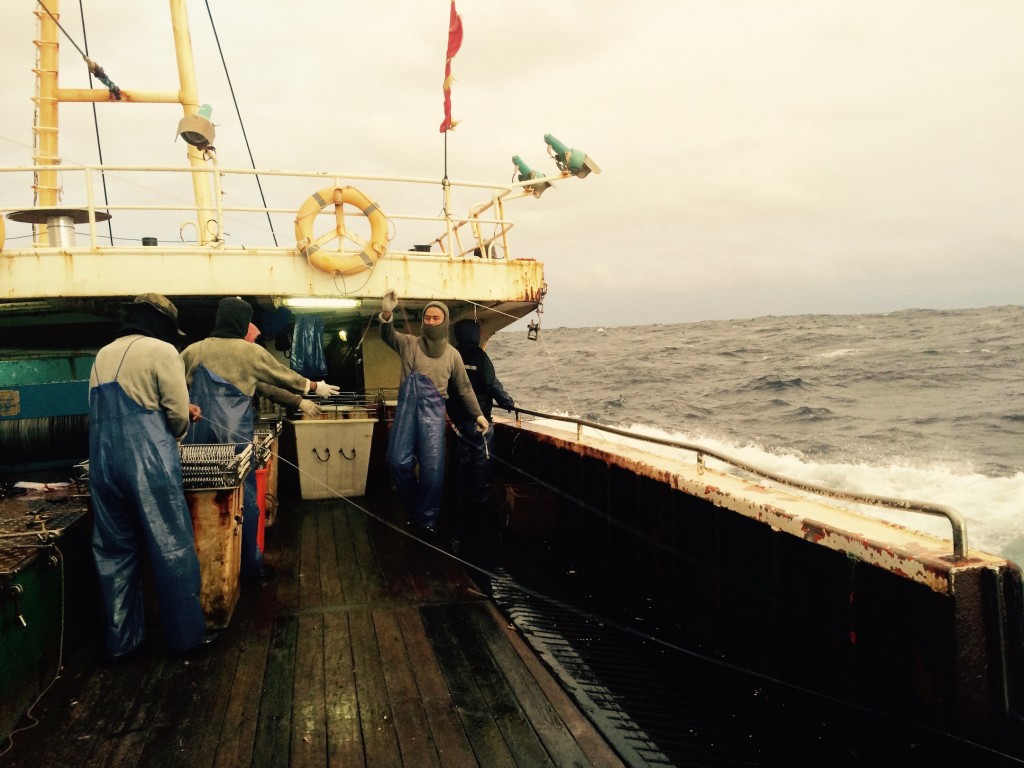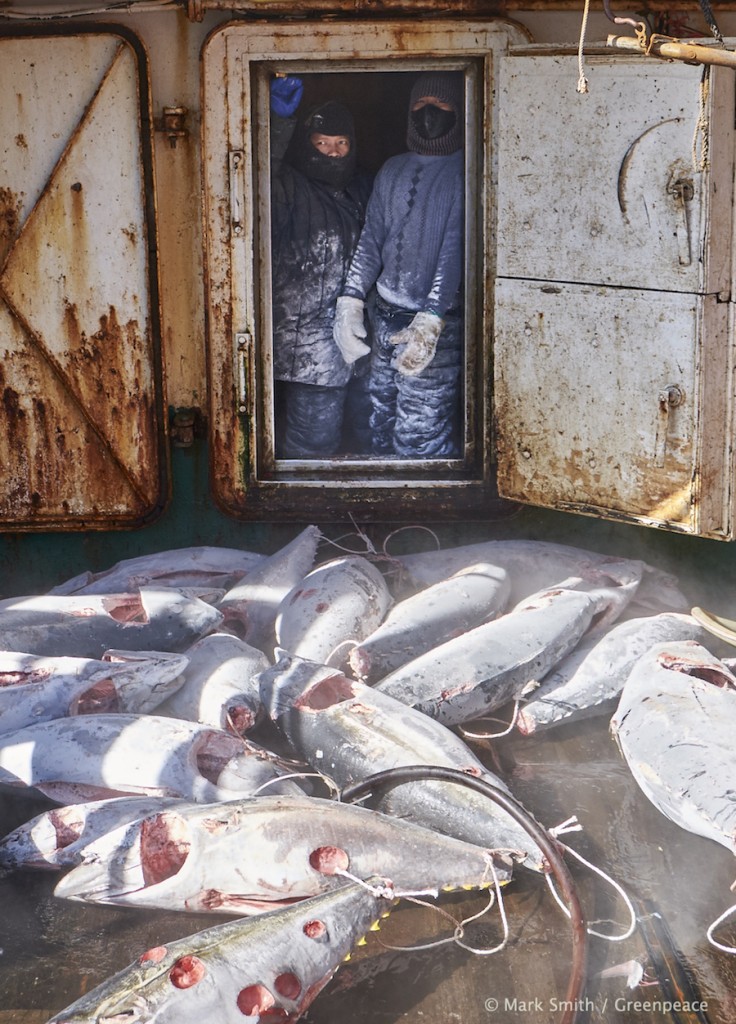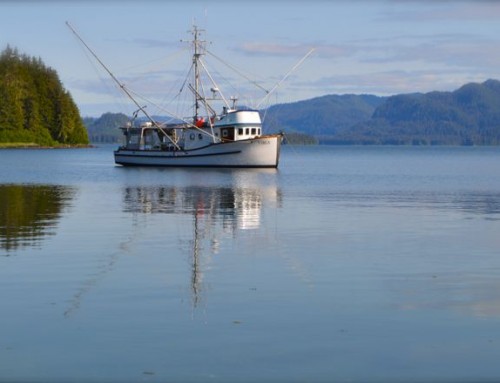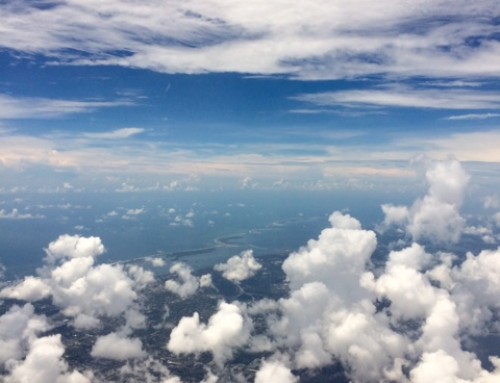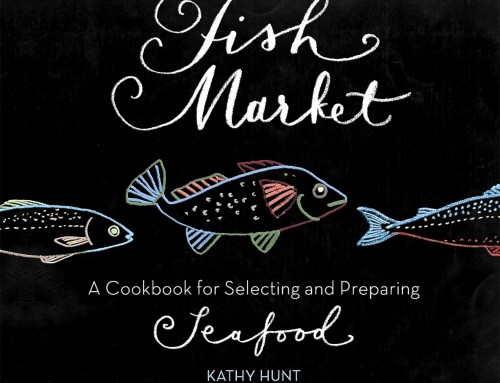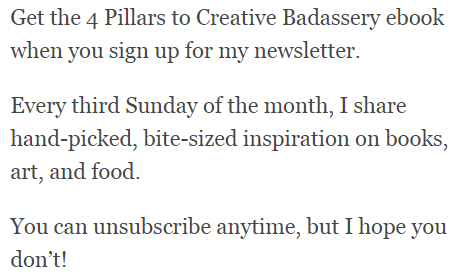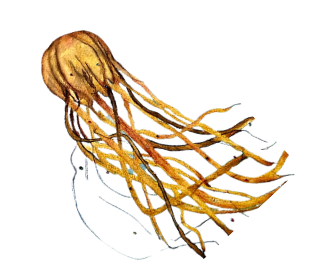An Interview With Greenpeace Volunteer Lauren Reid About What It Was Like Aboard a Pacific Tuna Boat
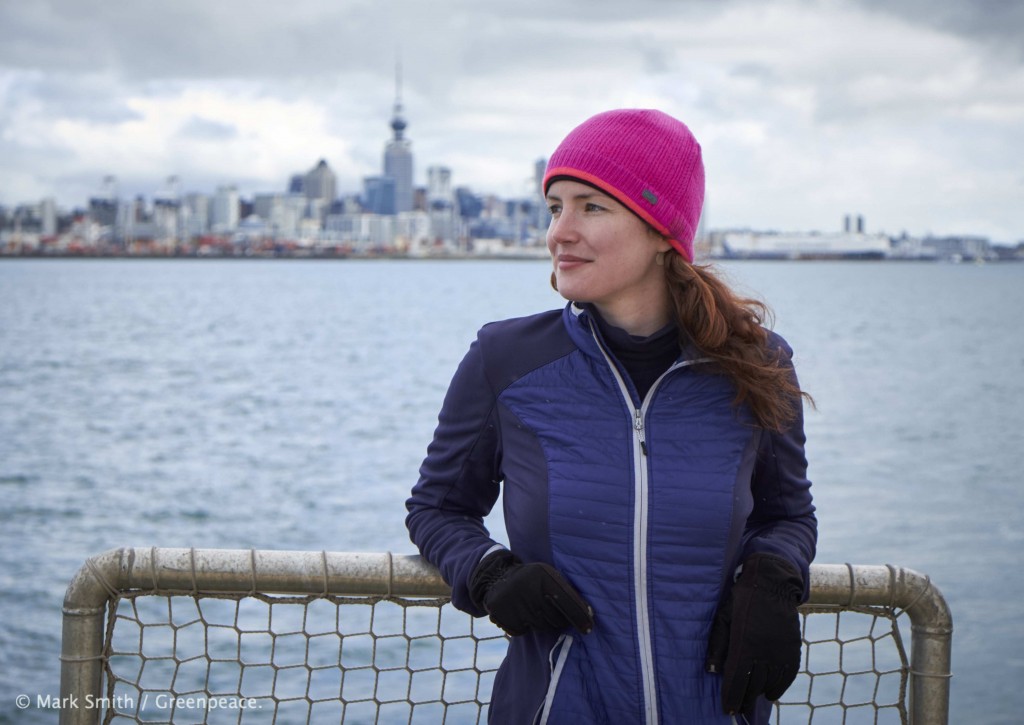
The Pacific tuna fishing industry has been in the spotlight for years. And not necessarily because it’s a shining example of a sustainability fishery.
We live in a tuna-hungry world. But with our appetites for tuna, we pay a high price. And I’m not just talking about your sushi bill.
Some of the issues you may have read in recent news include bycatch, the incidental capture of non-targeted species, and fisheries depletion of tuna, shark, and other marine species. The economies of the South Pacific islands, nations which depend on this species for employment, taxes and government services, are threatened by the lack of tuna sustainability. Human rights issues — human slavery and abuse — are prevalent in this industry too. Even worse, murder.
We need to change some things ’round here.
This interview is about Lauren Reid and her journey aboard the Rainbow Warrior, a Greenpeace ship. Its mission: to confront environmentally destructive companies and industries. Lauren, a freelance photojournalist, braved the oceans in July 2015 as a blogger-in-residence with Greenpeace to investigate the tuna fishing industry in the Pacific.
Thanks to Greenpeace Media Officer Perry Wheeler for the hook-up. I interviewed Lauren via email after she arrived back home to Louisiana.
What was your official title on the Greenpeace Rainbow Warrior?
I am independent of Greenpeace, so I came aboard as a writer to witness the various conditions we saw on the tuna long-liners.
How long were you at sea?
About three weeks.
Was this your first trip? If not, what were the dates and the itinerary for other trips?
This was my first trip with the Rainbow Warrior and honestly my first real trip at sea. I had never spent more than a few hours on a boat, so I was initially nervous I’d be spending most of my time with my head over the side. Thankfully, it turned out fine.
What were your responsibilities?
I was asked to keep a record of what I saw and share it with as many people as possible. I wrote articles, took photographs and wore a GoPro on my chest to capture what I was seeing from a first person perspective.
What were your expectations?
Honestly, I didn’t know what to expect, as I had never done anything like this before and there was no frame of reference to draw from. I knew it was going to be quite an adventure and an emotional experience. It was on both levels.
I didn’t expect it to be so easy to approach fishing vessels and get on them, but most of the crew was very kind and completely willing to let us look around. They must have been so shocked to see us approach, many hadn’t had actual contact with the outside world for months.
How many other women were on the trip?
If my numbers are correct, out of a crew of 31, there were 10 of us. They were all some of the strongest and most accomplished women I’ve met in a long time.
Any women on the tuna ships? If so, in what capacity?
None whatsoever.
Were you ever threatened physically? Emotionally?
I was never threaten in either way. Most of the fishermen were quite shy, but very kind. I didn’t have much contact with the officers on the ship, as they were busy providing different types of information to our crew. This isn’t to say it wasn’t an emotional trip in general—some of the conditions I saw were deplorable, and that was difficult to wrap my head around.
How many ships did you see/board? Any illegal/pirate ships?
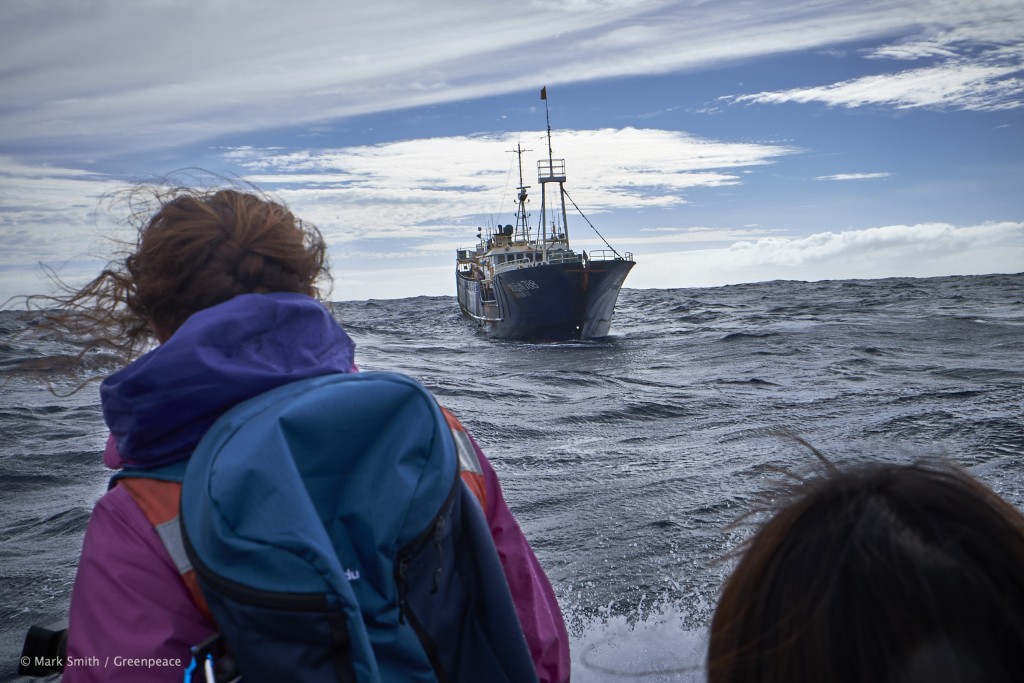
The Rainbow Warrior travels into the Pacific to expose out of control tuna fisheries. Tuna fishing has been linked to shark finning, overfishing and human rights abuses.
I boarded a total of seven ships during my time at sea. No pirate ships, but we thought at one point we found a very questionable ship, but weren’t able to get to it as we think it had turned off its signal.
What kind of technology does Greenpeace use to detect trawlers?
That’s a great question but I can’t really answer it. I am so technically illiterate when it comes to boats and the gadgets they use. I would hear that they found a ship and were going to call it, so I would come running to see what was happening.
What was the process of boarding a ship?
Sometimes it was quite stressful. We trained prior to seeing any ships on how to get on and off the Rainbow Warrior and onto the inflatable Zodiac, which would take a handful of us out to sea. There is a real trick to timing the speed and pace of the inflatable to the boat. I have to hand it to the crew, they were incredibly capable at doing this.
There were a few times the ocean was quite choppy, so it was nerve-wracking to make sure to heave onto the fishing vessel at just the right time. If not, any one of us would end up getting caught underneath the ship.
Tell me three things that surprised once you boarded the ship.
- I was most disheartened by the conditions these crew members lived in. One ship wouldn’t let the fishermen use the bathroom on board, so they were forced to sit on the railing of the ship to relieve themselves.
- I was also surprised by the kindness of the fishermen. I don’t know if I expected trouble getting on the boats or a general distrust for us, but they were very sweet and generous with letting us go around and checking everything out.
- I was shocked at how big the tuna were and how gruesome a process it was to watch them catch and kill each fish. I’m a fish-lover and eater, but the yellowfin were like the size of huge dogs, and it was quite difficult to watch it for hours on end.
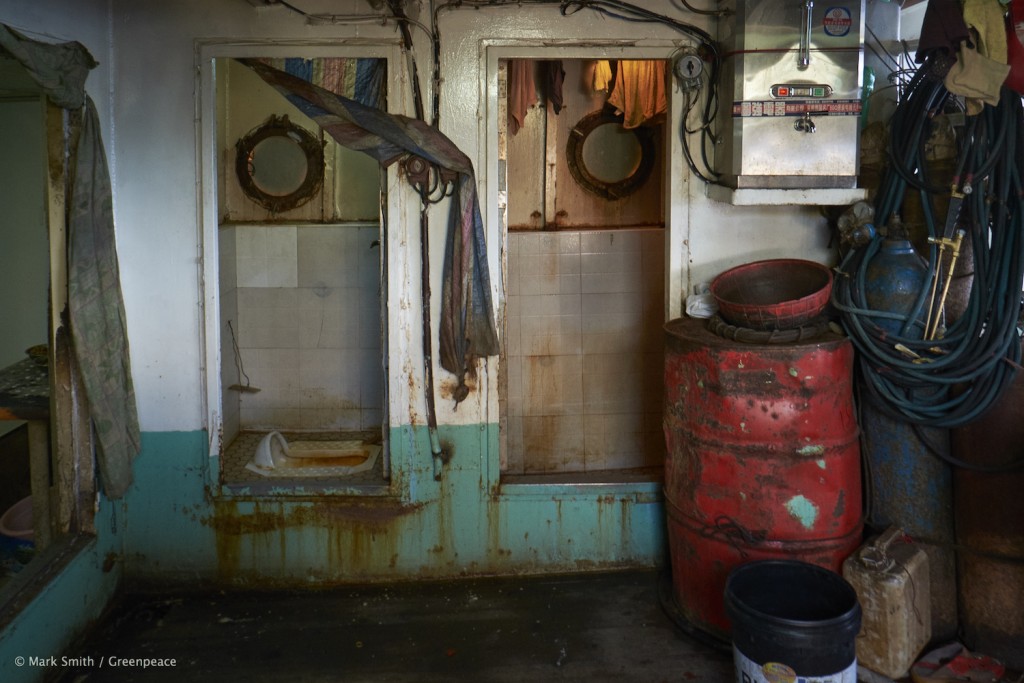
“On one boat, the fishermen confirmed that only officers were allowed to use the bathroom, and the workers must do everything off the side of the boat.” Lauren Reid via The Daily Meal
How big are the trawler(s) Greenpeace boarded on your recent trip?
All the boats were about the same size, although I don’t know the exact dimensions. Certainly big enough to hold hundreds of tons of fish in one trip.
Did you meet or see a mother ship?
Not during my time on the Rainbow Warrior.
What other fish species or mammals did you see on board other than tuna? Any discarded species?
We saw quite a few sharks and tons of sunfish. I have no doubt they caught other species, as it’s impossible not to with the process of catching via long-lining.
What kind of fishing gear did you see on the ship(s)?
Basically there’s one long line that can go for hundreds of miles into the ocean. The fishermen attach shorter baited lines and hooks to this and when they’re ready to haul, a massive machine pulls in the big line and the men work for hours taking off the hooks and fish if they catch them. There are also buoys to spot where the line ends up in the ocean.
Were there any attempts to hide gear, fish, or people?
Gear and people, no. Fish, perhaps. Not that the others don’t happen, I just didn’t see it. It was difficult to know what other species were caught considering they could store hundreds of tons of fish on each boat, crammed and packed in. We could only see as much as we could dig through, which was often limited.
What did the living quarters look like on the fishing boat?
There’s very little privacy on these ships. Sleeping quarters are four or even eight to a room, simple plywood planks with a blanket and pillow. Hardly a space to get true rest. Little tokens of home life were taped to the wall — photos, drawings and notes from the world they left behind. These are the only areas of respite from the continuous hours of work on deck; better than nothing, but honestly not much more than that.
How much tuna can one boat store before it offloads to dock or to a mother ship?
Hundreds of tons—100 to 200 depending on the boat!
Do you have plans to go again?
No plans as of now, but would go in a heartbeat if they asked me again!
What was your take-away on this trip?
That we as consumers have a very simple, yet vital role to play in their protection (of tuna). We can choose to buy from companies who profit off the backs of those who are abused and made to toil for long hours in unacceptable conditions, and after what I have seen, I never will again. But we don’t need to support them. There is ample choice of canned tuna in our grocery stores from reputable companies like Wild Planet, American Tuna and Ocean Naturals, who respect their employees and fish for tuna in a way that doesn’t destroy our already fragile ecosystem.
Any other significant details you would like to mention?
By golly, I think we’ve covered it. Thank you Maureen!
Hungry for more?
- The Truth About Tuna (The Daily Meal)
- World Trade Organization: Measures Concerning the Importation, Marketing and Sale of Tuna and Tuna Products
Got a question for Lauren? Ask away in the comments.
 Lauren Reid is a photo producer and writer based in New Orléans, LA, recently back from three weeks on board Greenpeace’s campaign ship, the Rainbow Warrior. She joined the crew to investigate how American canned tuna gets from sea-to-plate, worker conditions and the effects of commercial long-line fishing on a mass scale.
Lauren Reid is a photo producer and writer based in New Orléans, LA, recently back from three weeks on board Greenpeace’s campaign ship, the Rainbow Warrior. She joined the crew to investigate how American canned tuna gets from sea-to-plate, worker conditions and the effects of commercial long-line fishing on a mass scale.

